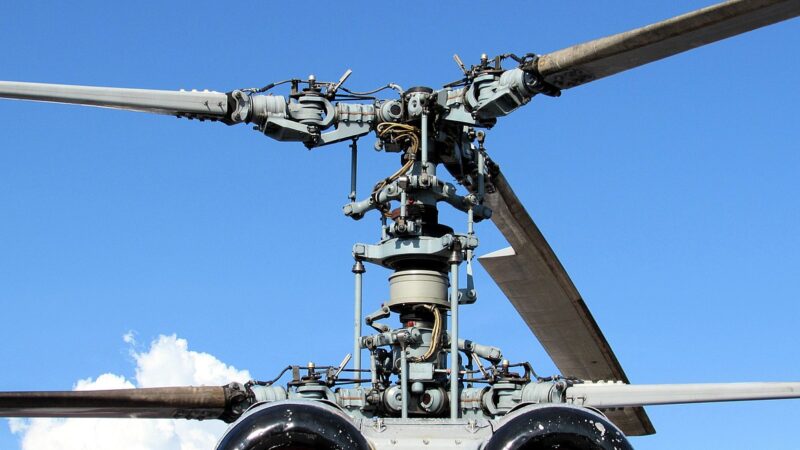Helicopter blades, also known as rotor blades, are crucial for the aircraft’s ability to lift off the ground, hover, and maneuver.
Over the years, the materials used in their construction have evolved significantly, leading to improvements in performance, durability, and overall aircraft performance.
In this post, I will explain what goes into making these pivotal components.
Key Highlights
- Composite materials dominate modern helicopter blade construction, offering a mix of strength, durability, and lightweight properties that metals alone cannot match.
- Advancements in materials and technology have significantly improved helicopter performance, including increased thrust, speed, fuel efficiency, and noise reduction.
- The design and material selection of rotor blades are critical for maximizing lift, minimizing drag, and ensuring overall aircraft stability and efficiency.
- Maintenance and regular inspections are vital to extend the lifespan of helicopter blades and ensure safety during flight.
- Future innovations may include ‘smart’ rotor blades that adjust their shape in real time and incorporate health monitoring systems to optimize performance and predict maintenance needs.
The Evolution of Helicopter Blade Materials
Initially, manufacturers used wood for rotor blades, a material that was accessible and relatively easy to work with.
The Bell 47 helicopter, a classic model, famously used wooden blades. However, wood had its downsides, including vulnerability to damage from environmental factors and wildlife.
The Transition to Metals and Beyond
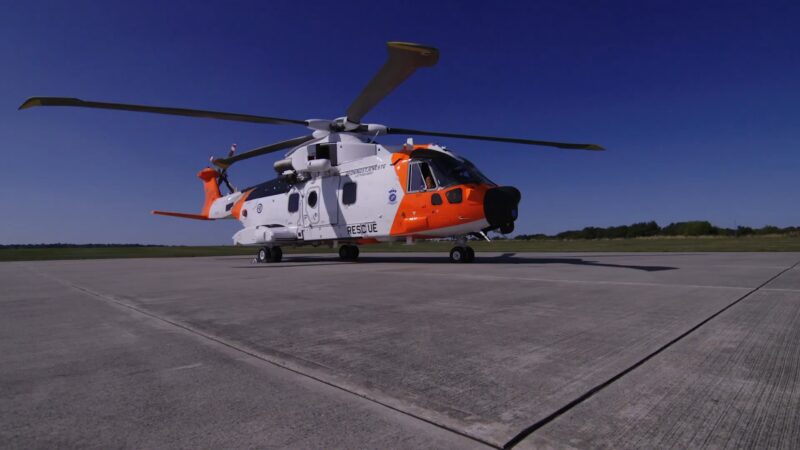
Metals like stainless steel and aluminum were introduced to overcome the limitations of wood.
Yet, metal blades had their challenges, such as the risk of fatigue from constant flexing and the rapid spread of cracks.
To address these issues, manufacturers began incorporating honeycomb technology, which added strength and flexibility to the blades without significantly increasing their weight.
The Rise of Composite Materials
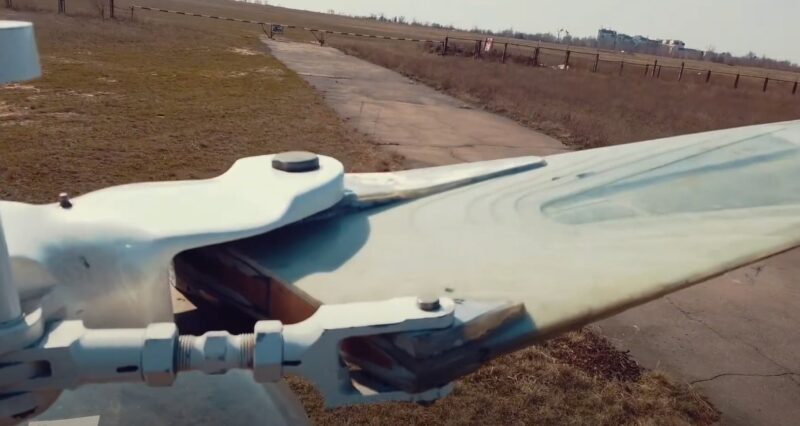
Today, composite materials dominate the construction of helicopter rotor blades.
These materials, including carbon fibre, fibre glass, stainless steel, aluminum alloys, Nomex, and titanium, offer a blend of lightweight, strength, and durability that metals alone cannot match.
Composite blades significantly enhance an aircraft’s performance by providing increased thrust and speed while also extending the lifespan of the blades.
How Are Modern Helicopter Blades Made?
Rotor blades are engineered to maximize lift while minimizing drag and noise. They also need to be stable, efficient, long-lasting, and affordable.
The design process has grown more sophisticated with advances in research and development, computer modeling, and data analysis.
Components of Composite Rotor Blades
- Carbon Fibre and Fibre Glass: These materials contribute to the blade’s strength and flexibility, allowing it to withstand the stresses of flight.
- Titanium: Known for its strength and resistance to corrosion, especially in hot climates, titanium is often used in areas of the blade that require additional durability.
- Aluminum Alloys: These are used for their combination of lightness and strength, contributing to the blade’s overall performance and affordability.
- Honeycomb Technology: This technology is incorporated within the blade to provide additional strength and resilience, helping to extend the blade’s lifespan.
Why Does the Material Matter?
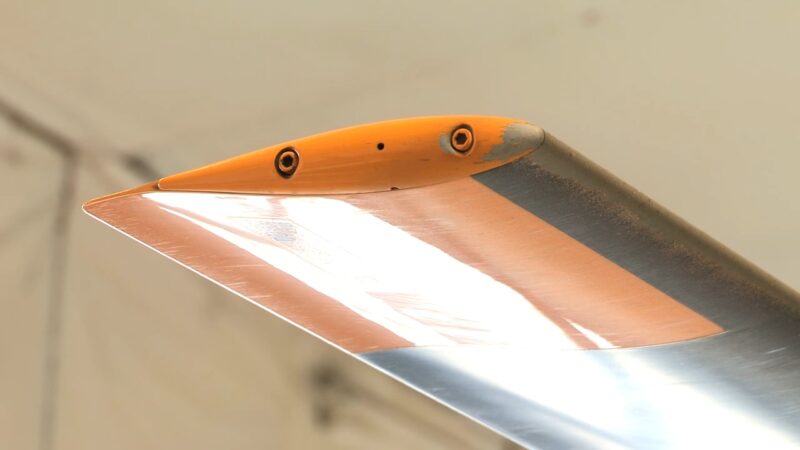
The choice of material affects every aspect of a helicopter’s operation.
From lifting force to vibration, the number of blades, and the aircraft’s overall performance, each material contributes to the rotor blade’s ability to perform its functions effectively.
Improvements in Performance and Safety
Composite materials have made rotor blades more efficient, reducing noise and fuel consumption.
Moreover, the introduction of de-icing systems has made flying in icy conditions safer, addressing one of the significant challenges of operating helicopters in cold climates.
The Cost of Innovation
While the use of advanced materials and technologies has improved the performance and safety of helicopters, it has also increased the cost of rotor blades, regardless of their size.
Replacement can be an expensive endeavor, with costs varying widely depending on the helicopter model and blade type.
What to Expect in the Future
The last 70 years have seen tremendous growth in the field of rotor blade manufacturing.
As materials science continues to advance, we can expect to see further improvements in blade design, leading to even more efficient, safe, and cost-effective helicopters.
The Challenges of Helicopter Blade Design
Manufacturers constantly face the challenge of designing blades that can withstand environmental stresses, including temperature variations, moisture, and physical impacts.
The integration of composite materials has been a game-changer, offering resilience against these factors.
However, the quest for the ideal helicopter blade does not stop at material selection; it extends into the realms of aerodynamics, mechanical engineering, and environmental science.
Enhancing Aerodynamic Efficiency
A key goal in rotor blade design is to enhance aerodynamic efficiency. This involves shaping the blades to reduce drag and increase lift, thereby improving the helicopter’s overall performance.
Engineers use sophisticated computer simulations to model airflow around the blades, allowing them to tweak designs in a virtual environment before any physical testing.
Reducing Noise and Vibration
Noise and vibration are not just comfort issues; they are critical performance factors.
Excessive vibration can lead to mechanical failures, while noise levels are tightly regulated in many areas.
Composite materials have been instrumental in addressing these issues, as they can be tailored to dampen vibration and reduce the noise produced by the rotor blades during flight.
The Importance of Durability and Maintenance
Durability is another crucial consideration. Rotor blades are among the most stressed components of a helicopter, subjected to constant bending, twisting, and exposure to environmental elements.
Composite materials offer superior fatigue resistance compared to traditional materials, extending the life of the blades and reducing maintenance requirements.
The Role of Advanced Manufacturing Techniques
The manufacturing of helicopter blades has also benefited from advancements in technology.
Techniques such as resin transfer molding and autoclave curing have improved the consistency and quality of composite blades.
These processes ensure that the materials maintain their strength and structural integrity over time, even under the strenuous conditions of helicopter flight.
Smart Rotor Blades Are the Future
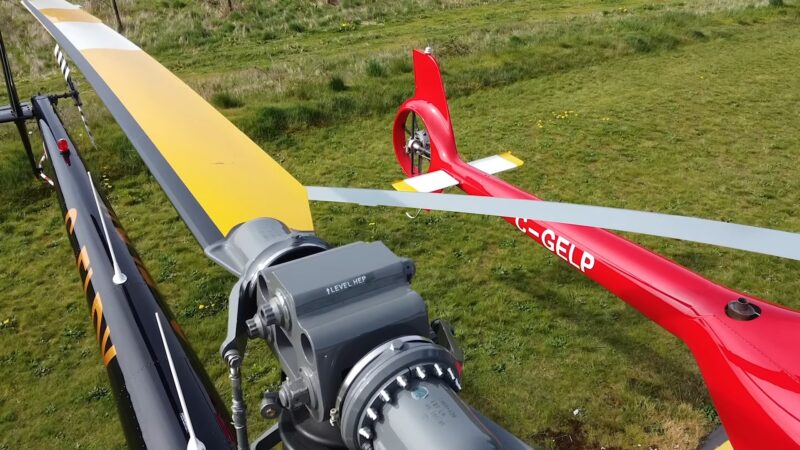
Looking ahead, the future of helicopter blades may lie in “smart” materials and designs.
Innovations such as active shape control using piezoelectric materials could allow blades to adjust their shape in real-time, optimizing performance under varying conditions.
Additionally, health monitoring systems embedded within the blade structure could predict maintenance needs, further enhancing safety and efficiency.
FAQs
Can helicopter blades be repaired, or must they always be replaced when damaged?
Blades can sometimes be repaired, depending on the extent and type of damage.
Minor surface damage and small defects can often be fixed, extending the blade’s service life.
How often do helicopter blades need to be replaced?
The lifespan of helicopter blades varies widely based on their material, usage, and maintenance.
Manufacturers provide specific guidelines, but regular inspections help determine the need for replacement.
Do all helicopters use the same type of blades?
No, helicopters use different types of blades depending on their design, purpose, and manufacturer specifications.
Blade designs vary in terms of material, length, and shape.
Why do some helicopters have more blades than others?
The number of blades affects the helicopter’s lifting capacity, stability, and noise.
More blades generally allow for a smoother flight and can support heavier loads, but also add complexity and cost.
Are helicopter blades affected by weather?
Yes, extreme weather conditions like high winds, rain, and temperature extremes can affect blade performance.
Manufacturers design blades to withstand typical weather conditions encountered during flight.
Can helicopter blades be recycled?
Recycling of helicopter blades, especially those made from composite materials, is challenging but possible.
Efforts are underway to develop more sustainable recycling methods for composite materials.
Closing Thoughts
The materials used in helicopter blades, from wood to composite materials like carbon fibre and titanium, have evolved to meet the demands of modern aviation.
This evolution reflects the ongoing quest for better performance, efficiency, and safety in helicopter design.
As technology advances, so too will the materials and designs of helicopter rotor blades, ensuring that these aircraft remain vital tools in transportation, rescue, and military operations around the world.
